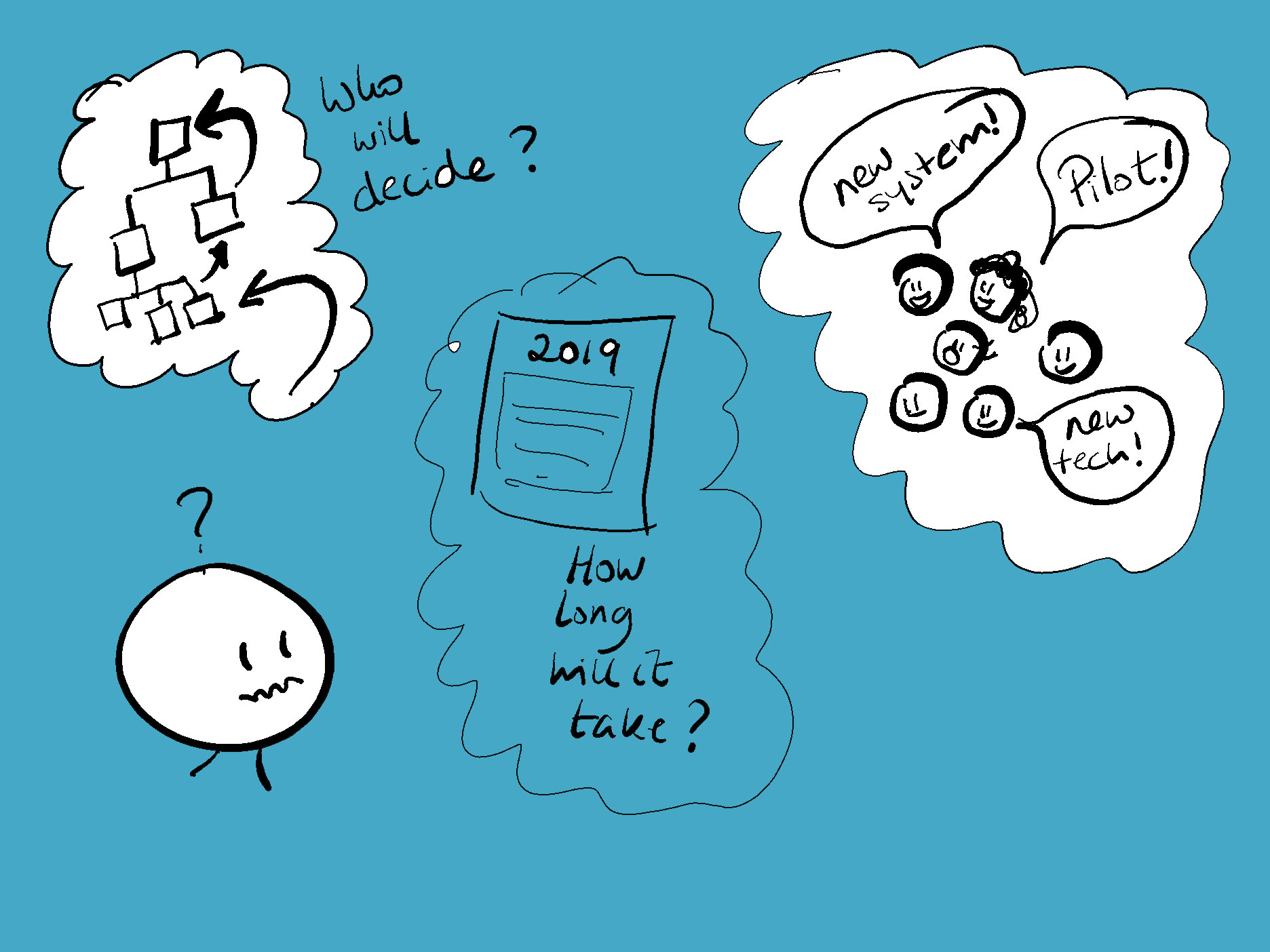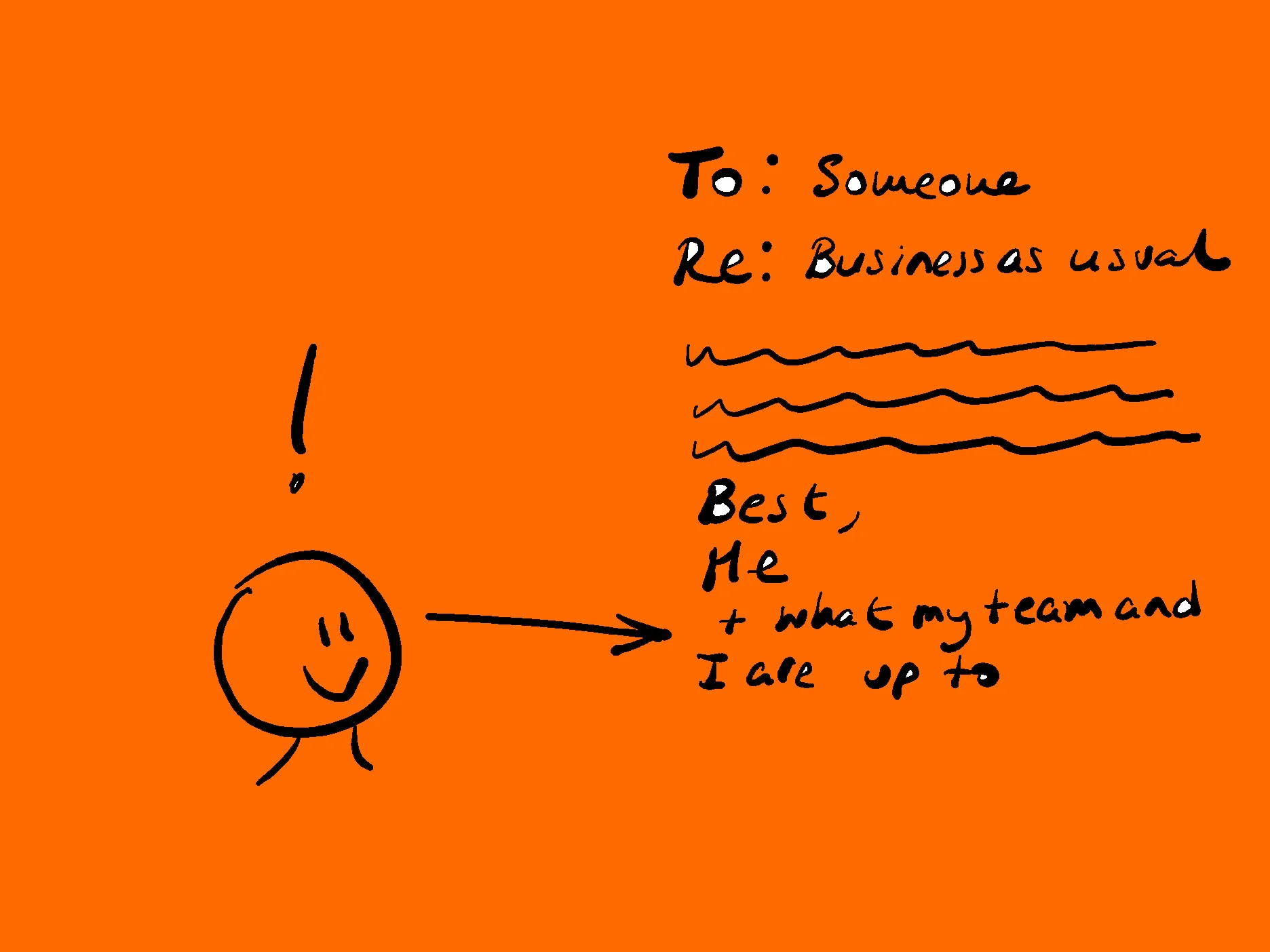Small Changes, Big Impact
When seeking improvement in an organisation, we often look at others to take the first steps. The change is too big for us to carry out on our own. The change involves too many people in the organisation, others over whom we have no influence. And if the change we’re introducing is increased remote collaboration, then the focus needs to be on the technology, right?
The problem with introducing technology to help us work together is that it immediately zooms us in to the details, when it’s more likely that the changes we need are more strategic.
With technology, everything becomes complicated. We focus on the tools, on choosing the tools, on learning to use the tools. We find ourselves trying to sketch something on our online whiteboard, when putting up a pencil-drawn stretch in front of the webcam will put our point across just as well (or better, and faster, definitely faster).
Paying attention to the tools, and spending the time learning how to use them is necessary, but it can be your second step, not the first. Sometimes revisiting how you use what you currently have, and checking on how well that aligns with how you do your work, is a better first step.
Nail down the problem
At a recent workshop, the attendees (managers of remote and hybrid teams) identified one of the factors that was getting in the way of doing their best work. It affected their sense of autonomy, competence and purpose.
They found it difficult to know who did what in their organisation.
Of course this can happen even if you’re colocated, but when you are using technology to reach out to people, it becomes more noticeable.
Yes, the company had an online platform that helped you find others, but ultimately, everyone had titles (Director of this, Manager of the other,) that explained very little of what they actually did.
Employees in this company communicated mainly by email and were in the early stages of adopting collaboration platforms and other online tools. One of the managers said, “'The title in the email signature says nothing to me about that person or their work."
Problem identified.
(Keep reading, there’s more…)
One small change
We could have thought of asking for a new online space where the titles were explained, or tried to hold regular town hall type meetings where people explained what they did, or created new online spaces for teams to describe what they did. But actually, the solution was much simpler.
For an outsider, the simple solution was obvious:
"If you are feeling this way, others are probably too. So how addressing this straight away by changing your own signature. Later on you might think about how to institutionalise better job titles, but for now, what's in your power to change? Think of a short sentence that summarises what you do. (Lots of laughter in the room as everyone thought of signing off as Director of broken heart, or Director of This and That…) Or, if that’s complex and might confuse things further, follow your name with "You can ask me about ...''
The workshop participants were also worried about their team’s visibility within their organisation, a common concern of remote teams in companies operating mainly from head offices. An email signature is one place where you can easily give visibility to your team.
I added,
“You can also use your signature to increase your team's visibility and that of your work. Consider having a line under your name which says "This week we're [insert here who you're helping, what you're making, where you'll be] '
Changing an email signature doesn't involve changing your IT; it doesn't involve learning new ways of working; it doesn't involve learning how to use a new application.
But it does involve remembering that every bit of communication online presents a potential point of connection, remembering that sometimes we get distracted by adopting new technology, and don’t take full advantage of what we have at hand, that making ourselves and our work visible can actually help others, even if it is through one simple sentence as we sign off.


